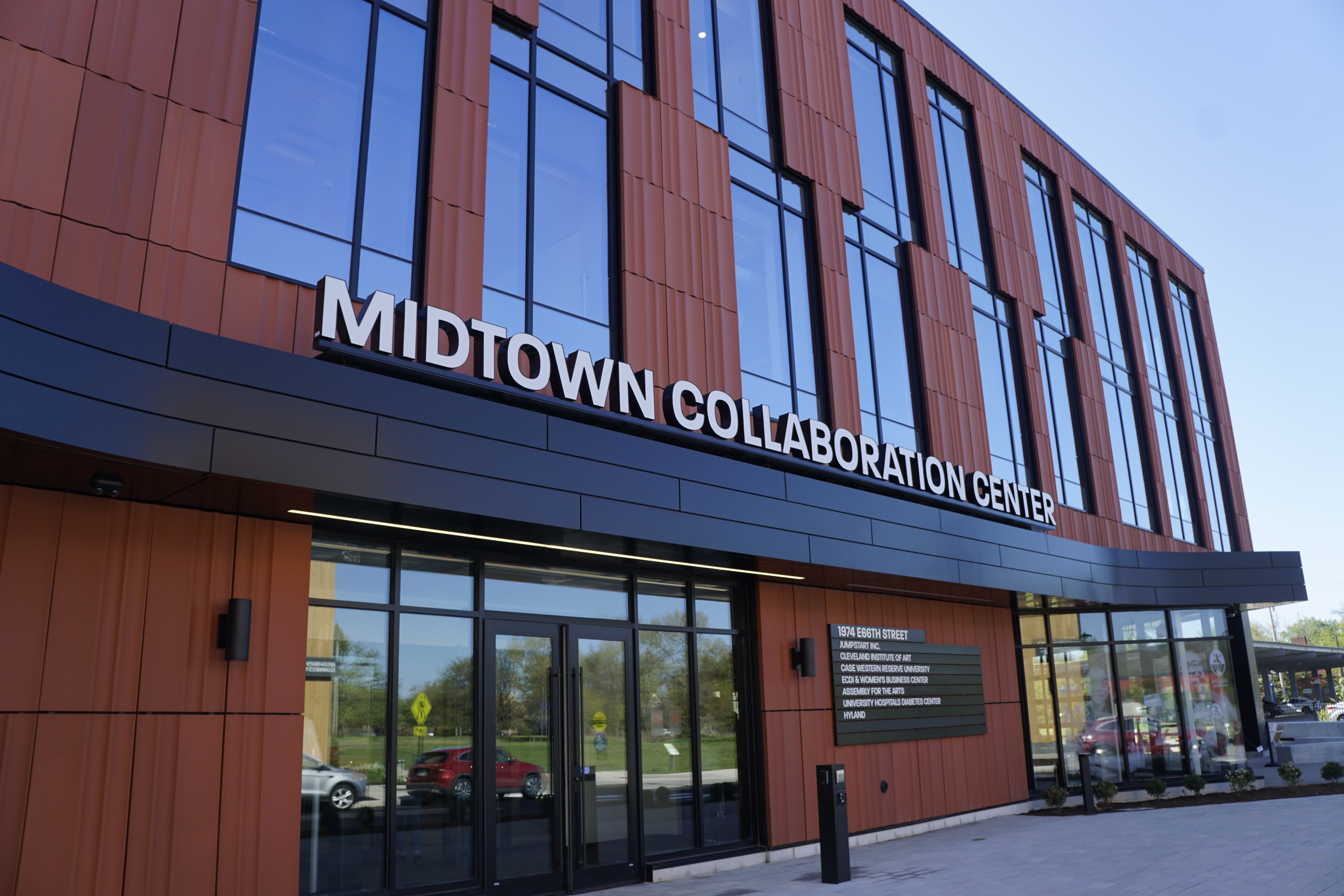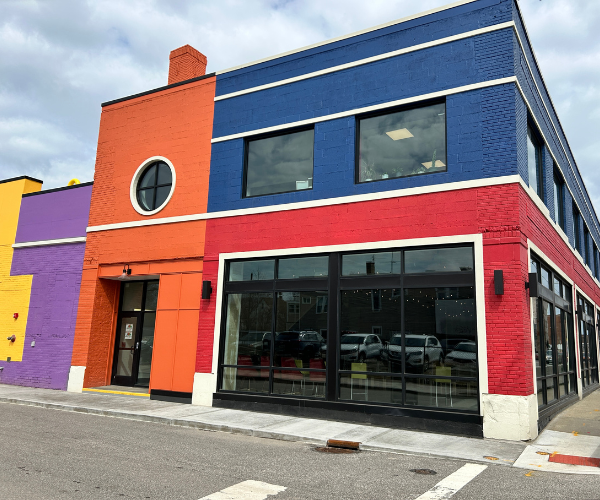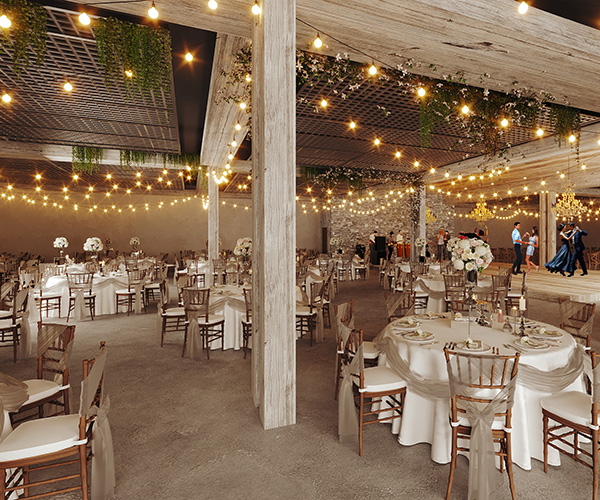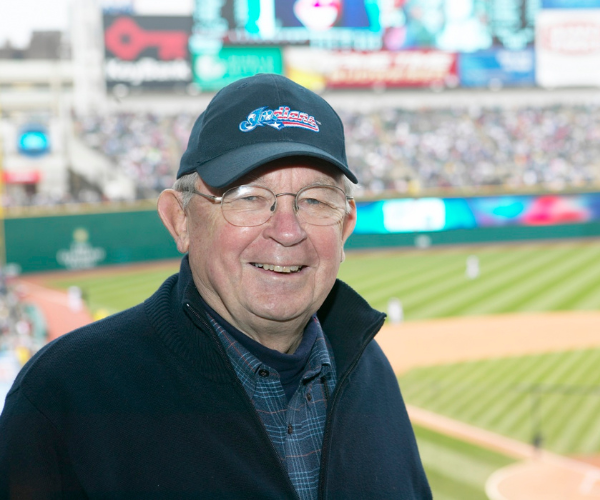Intermuseum Conservation Association Saves Art
by Ken Schneck | Sep. 16, 2019 | 12:00 PM

PHOTOGRAPHED BY KEVIN KOPANSKI
Wendy Partridge stands with her face two inches away from a canvas, with one hand on her hip and a half-smile on her face. Staring back at her from the painting is 9-year-old Kathleen Firestone.
With pursed pink lips, penetrating blue eyes and thick, blonde, wavy hair falling onto a severe black frock on which her pale hands sit primly folded, the young Firestone stares strongly back at anyone who meets her gaze.
“Now she looks kind, gentle, but so determined,” says Partridge. “A few weeks ago, she only looked annoyed.”
Originally painted in 1928 by Cora
Millet Holden, the piece was brought to Partridge by Kathleen Firestone’s descendants a few months ago. The 9-year-old was barely recognizable and hardly the prim child now seated in the painting. From top to bottom, the paint was peeling off of the canvas in chunks.
“If you even thought about the paint too hard, it would come off,” recalls Partridge.
Over the course of seven weeks, she worked on restoring the early 20th-century painting.

Partridge combed through paperwork and conducted tests to determine a treatment plan. Then, she carefully placed adhesive under the curled flakes, using a small iron to gently smooth much of the paint back into place. A gentle solvent removed a layer of grime from the canvas, revealing a deep green curtain behind the small child, which Partridge had originally assumed to be a textured backdrop.
Now Partridge stands in front of Firestone, fine brush in hand, carefully mixing together blues and greens from the palette to her right, gently but firmly filling in the spaces where the paint had fallen off.
In just a few days, the portrait of Kathleen Firestone will be fully restored, completing Partridge’s work on this project. She’s seamlessly morphed from art historian to skilled technician to laboratory scientist and painter. For some, it would be a dizzying rotation of roles. For Partridge, and the other six staff conservators at the Intermuseum Conservation Association, the turnover from project to project is nothing new.
“There is never a point when conservation is done,” says Julie Reilly, executive director of ICA. “We’re always trying to fight the effects of time on art and that’s a never-ending battle.”
As the oldest nonprofit regional art conservation center in the country, ICA is internationally recognized as the go-to hub for preservation and restoration of the widest variety of cultural artifacts. The center has coordinated the rehab of the Cleveland Free Stamp in 2014, consulted on the preservation of Lady Gaga’s famed meat dress in 2011 and examined a pair of Japanese warrior guardians carved in the late 1500s from hinoki cypress. A majority of the work happens in a three-floor, 18,000-square-foot, climate-controlled facility that is equal parts art museum, mad scientist lab and high-tech invention test site.
Even more remarkable: thousands of Clevelanders stroll right by ICA every single day, completely unaware of the magic happening behind its closed doors. The only sign of its existence is a white decal imprinted with an ICA logo on one of the four covered-up bay windows facing Detroit Avenue. Travelers know they can catch a concert at the Bop Stop across the street, see a gallery show at Spaces a few feet away, or sip a pint at Jukebox right around the corner, all the while ICA looms above the Hingetown neighborhood in anonymity, completing 350 projects a year unbeknownst to those strolling by.
But that mysterious shroud is about to be lifted, as ICA stands on the cusp of a more public-facing debut. Since Reilly took the helm as executive director two years ago, she has been laser-focused on getting ICA stabilized financially. Now, ICA is primed to embrace its goals of educating the public by inviting them into workshops and classes to impart the conservators’ knowledge of restoration and preservation.
“If we only focus on working with the most elite museums, we’re really not preserving the body of artistic and cultural heritage,” says Reilly. “To achieve our mission of conservation, conservation must be in the hands of everyone. We have a responsibility to bring this work to the public.”
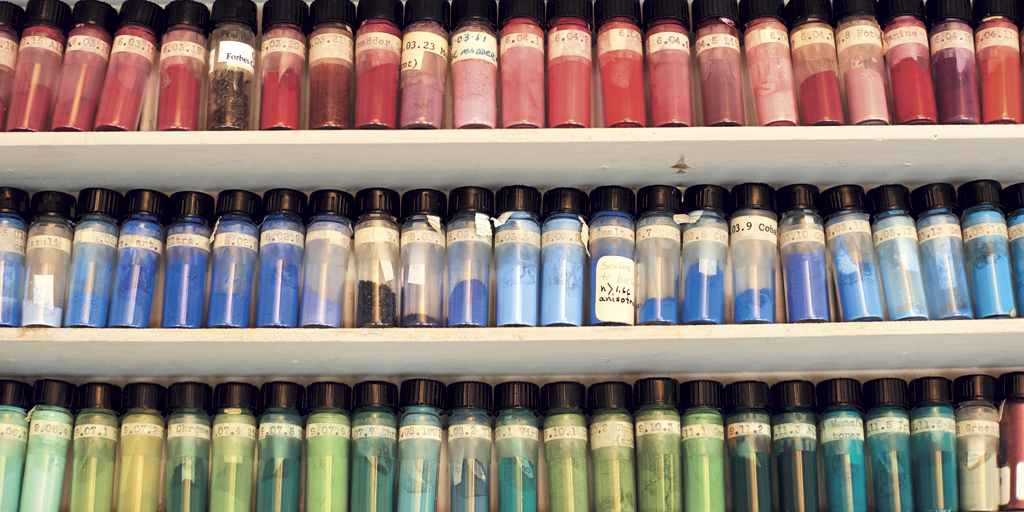
A Superman clock from the 1960s, an aluminum eagle from a Cincinnati federal building, the original amber-colored plastic, metal and wood sign from Swingos. Everywhere you look at ICA, there’s a different cultural wonder to behold.
The entire 6,000-square-foot second floor is an open workroom, loosely divided into sections where teams work on paintings, objects, textiles and paper.
Far from being a house of oddities, ICA’s very mission is to traffic in such cultural artifacts and restore them to their former glory. Founded in 1952 after the directors of five Midwestern museums decided to pool their resources to hire one full-time conservator, ICA originally set up shop on the campus of Oberlin College, where it was housed for more than 50 years. As the first nonprofit regional art conservation center in the U.S., ICA became the model for the National Endowment for the Arts when they set out to create other regional centers across the country.
ICA has treated more than 25,000 objects over the years, from classic relics to more modern examples of pop culture. In 2018 alone, it kept 32 collections in safekeeping for museums such as Oberlin’s Allen Memorial Art Museum and Stan Hywet Hall & Gardens. It also reproduced four rare Victorian lampshades, conserved Neil Armstrong’s experimental Douglas F5D jet aircraft and cleaned Victor Schreckengost’s outdoor sculptural relief at Lakewood High School. In truth, there isn’t much ICA can’t do.
In the textiles workspace, one of Harry Houdini’s straitjackets sits wrapped in tissue paper. It awaits the deft ministrations of Jane Hammond, the textile conservator, who is removing a layer of soot and repairing damages to the fabric.
“I’m not manipulating huge audiences with my escapades, but as I treat this terrifying institutional straitjacket that Houdini wore while hanging upside down, I can really feel the history of the piece,” says Hammond.
The Rock & Roll Hall of Fame, a regular client for ICA, has provided a steady stream of iconic restoration projects over the years, from Cyndi Lauper’s bustier featured in the 1983 “Girls Just Want to Have Fun” video, to a guitar strap from The Clash and Hammond’s favorite work: a jacket embroidered by a Punjabi tribe that Mick Jagger wore onstage in 1977. The jacket had been damaged when a roof leak caused the vegetable dyes to bleed, and Hammond had to embroider over the damage.
“That project was so special because you could feel the spirit of cultures that don’t exist anymore,” recalls Hammond. “We all descend when the Rock Hall brings in a new object because everyone here can relate to these musical stories.”
Perhaps the oddest feature of ICA is also its most subtle: a plexiglass cabinet on the western wall of the workroom housing 500 small glass vials containing a veritable rainbow of substances.
As the lore goes, Richard Buck, the original ICA conservator in 1952, was formerly a student of Edward Forbes, the director of the Fogg Art Museum at Harvard University. Forbes, one of the preeminent teachers of museum directors, was an ardent collector of pigments, instructing his students to send him myriad samples as they went to work in museums across the world. The full 3,000-bottle collection of these historically important colorants sits on display in the Straus Center for Conservation and Technical Studies at Harvard. But Forbes also created a tiny handful of satellite collections, including one for his former student, Buck.
ICA’s collection of 500 specimens includes everything from an apricot-hued sap gathered from gum acacia trees, to rich green malachite that is ground up to make pigment, to Indian Yellow, a substance about which you have to ask twice to make sure you got the explanation right.
“The pigment is a powder made from the processed urine of cows who are only fed mango leaves,” says Reilly, ready to explain it again when you inevitably ask for
clarification.
Far from being just an eye-pleasing display of wall art, conservators use the small samples of pigments as references when they need to verify the origins or decipher the chemical makeup of the pieces that come into their care.
“The Forbes collection is the perfect example of everything we do,” explains Reilly. “Researching the chemical makeup of the pigments represents science, as the colors and display itself capture the arts and humanities that inspire us every day.”
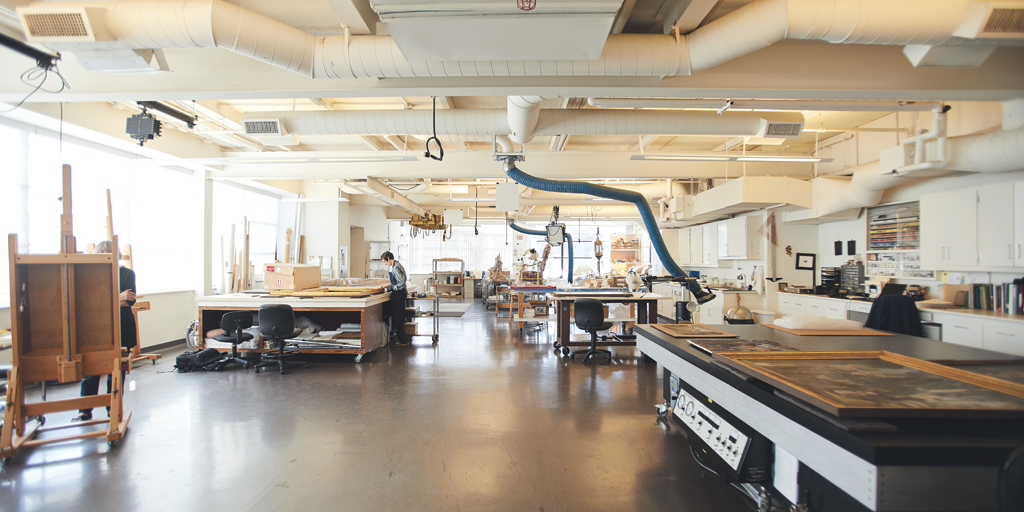
Charlie Eiben perches on his stool, bent over the frame in front of him. Old-school Walkman headphones are plugged into his phone, from which one of Antonin Dvorak’s string quartets pipes through his ears, cutting him off from the noise around him.
Officially, Eiben is the art transport manager and only preparator at ICA. But his colleagues more commonly call him a “jack-of-all-trades,” an expert in matting, framing, installing, uninstalling and getting everything where it needs to go while always preserving the integrity of the original piece.
Today, he has a thin, empty, five-paneled wooden frame before him, that up until recently held a five-page neatly typed poem.
The work was composed by famed author E.B. White in 1948. White was writing to the wife of author and conservationist Louis Bromfield about his experience at Malabar Farm, Bromfield’s 1,000-acre estate near Mansfield, Ohio. For decades, the poem has been hanging on the walls of the Big House at Malabar Farm — now a historic landmark — and the piece was recently turned over to ICA by the Malabar Farm Foundation for restoration.
The poor quality paper on which the poem was typed had already gone through extensive treatments at the hands of Cher Schneider, ICA’s head of paper conservation.
Now it’s left to Eiben to get the paper back in a frame and provide the structural support so the piece can be rehung on the wall. He deftly predrills tiny holes into which he places small hooks. His rough, workmanlike hands that attach the hanging wire have clearly done this before, even if reluctantly.
“We try to talk people out of the hanging wire as it can distort the frame over time, but everyone wants the wire,” says Eiben, sighing.
In mere minutes, his portion of the project is complete. The rematted poem fits neatly into the frame, Eiben secures the back of the wooden piece, flips it over, and looks around to see what’s next on the day’s list of projects. At ICA, the list of projects never grows short.
To even be considered as a conservator, aspirants usually start with an immersion field of anthropology, studio art, chemistry or the most common background: art history. This humanities-based core then must be augmented with a robust slate of science courses, all the way through physical chemistry. Before even being considered for graduate study, applicants must have worked a minimum of 400 documented hours within a conservation lab to compile a portfolio of conservation projects while also amassing their own body of artwork.
“The preparation to become a conservator is greater than that to become an MD, but I can assure you we get paid tons, tons, less,” laughs Reilly.
There are only six nationally recognized graduate programs operating in the U.S., each accepting fewer than 10 incoming students annually, so the competition for entry is fierce. Somewhere along the way, conservators find their specialization. Some choose to work with paper, focusing on books, archival documents, photographs and more. Others choose to work with textiles, paints or objects, which includes a variety of items such as ceramics, glass, metals and organic materials such as bone, ivory and leather.
“When we’re conserving all of these objects, we’re conserving the human legacy in all of its diversity: time, geography, material use and aesthetics,” says Reilly.
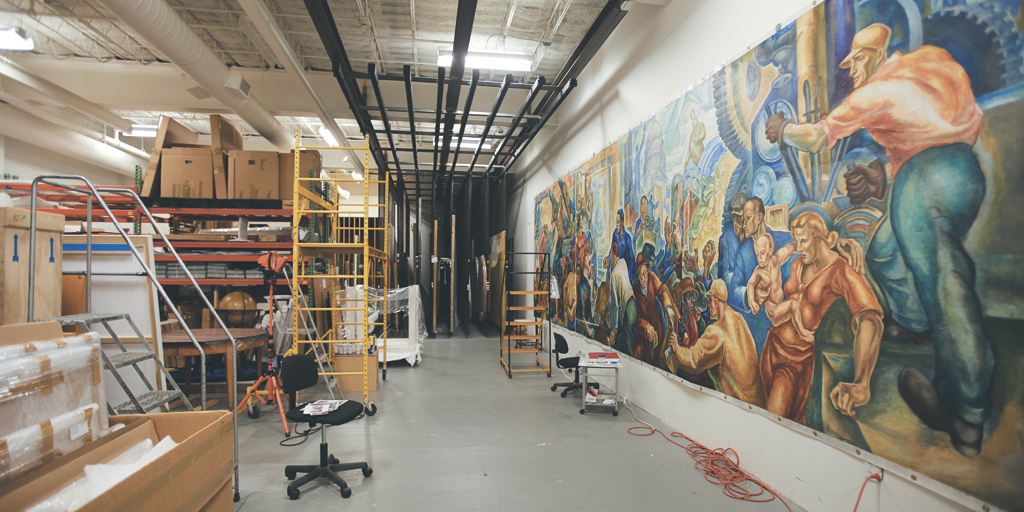
The employment opportunities after graduate school usually find conservators working for museums, historical societies or conservation centers, or setting up shop as hired independent consultants. The result of this narrow, long and winding career path is a small club of about 2,500 conservators total in the United States. And yet, their work is always relevant.
For Eiben, that means getting out into the world as much as working behind closed doors. After completing the reframing of the White poem, he jets over to Case Western Reserve University to consult on the reinstallation of Philip Johnson’s Turning Point, a 22-foot-tall Douglas fir and fiberglass sculpture garden that had been erected in 1997, but previously been removed to make room for when the Tinkham Veale University Center opened in 2014. Though Eiben isn’t the one actually doing the heavy lifting, he and the other ICA conservators work closely with the contract crews, who on this day are creating score marks at the base of the sculpture to ensure its stability.
“We have to make sure that everyone is on the same page to protect the beauty and vulnerability of the sculpture,” says Eiben. “We’re there to help them embrace the urgency for the care that goes into installation.”
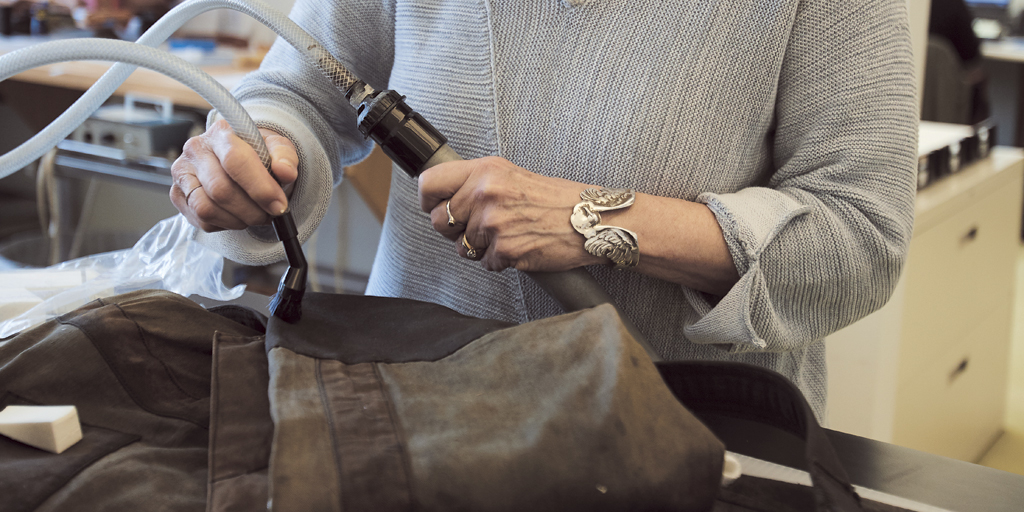
The future of ICA can be found in a dingy, nearly forgotten space. Just down the stairs from the brightly lit workroom, a first-floor storefront is currently in the works.
The windows of the expansive space are largely covered with translucent white film, only permitting a minimal amount of light to enter. Piles of opaque glass remain from the space’s days as the showroom for the Cleveland headquarters of the Vitrolite Co. The glazed terra cotta tiles, painted pea green, mostly remain intact, though some have been torn completely from the wall.
Amidst the rubble, there are towering 20-foot-tall tubes used to transport murals ICA is conserving, empty hangers on an old metal coat rack and a thick coat of dust.
“This is currently the saddest place in the building,” says Holly Witchey, ICA’s director of education and outreach.
That’s all about to change, as ICA is set to embark on a yearlong transformation to welcome the public more fully into its space and the work that it does.
The goal is to take the scientific techniques being expertly employed in the workroom above and provide the public with tools to apply some of these skills to their everyday lives. They might not have a 70-year-old poem by a famous poet hanging on their wall, but they might have treasured family photos that need some help in withstanding the ravages of time.
When looking ahead to the future, ICA sees this space not as a former showroom covered in dust, but as a reimagined educational center filled with flourishing artful activity.
“We want this to be a space where people can come in and ask questions,” says Witchey. “We’ll have, say, a cast iron night, with material experts, local blacksmiths and people who just want to learn more about how to preserve what they already might have at home.”
The bid to transform the storefront into a lively space is already out to a contractor, and the neighborhood can expect to gain access to workshops and classes on conservation and materials in the upcoming year.
To further bolster future generations of conservators, ICA hopes to partner with the incoming West Side High School being built a block away. The ICA wants to integrate its unique work into the school’s STEM and STEAM programs. The idea is to preserve a future for art conservation by challenging the commonly held misconceptions around individual abilities and strengthen the means through which this rare and wonderful world can be accessed.
“We bifurcate people into the arts and sciences, but the same mind is capable of doing both,” says Reilly. “You can’t fully understand one without understanding the other. This is at the core of what we do behind these doors every single day.”
For now, ICA is moving into the future by continuing to preserve our past, with hundreds of projects ahead of it. This month, ICA will begin cleaning and conserving 24 prints from Donald Judd, an American artist known for his international influence in minimalist architecture and design.
“One of the things that makes the human species unique is that we are so creative and we make so many things,” says Reilly. “We are preserving the work of artists who have lived for millennia before today for audiences who will view it a millennia after today.”
For more updates about Cleveland, sign up for our Cleveland Magazine Daily newsletter, delivered to your inbox six times a week.
Cleveland Magazine is also available in print, publishing 12 times a year with immersive features, helpful guides and beautiful photography and design.
Trending
-
1
-
2
-
3
-
4
-
5



